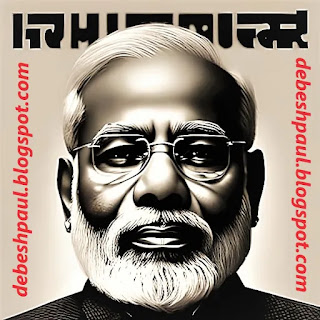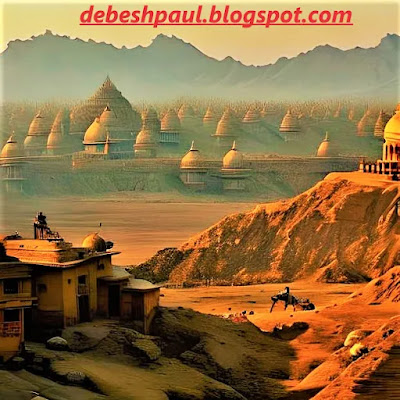The New York Times' Anti-India Agenda: How the Newspaper Distorts the Reality of Kashmir and Press Freedom
agenda, press freedom, meeting agenda, reporters without borders, world press freedom day, agenda slide, press freedom day, freedom of press article, kick off meeting agenda, board meeting minutes, world press day, event agenda, world press freedom, press freedom meaning, new york times, new york times wordle, wordle new york times, the new york times, new york times crossword, new york times wordle today, new york times spelling bee, new york times best sellers, new york times mini crossword
Kashmir is such a word, on the mention of which not only Hindus but also the people of the outside world get perplexed. Since it has been at the centre of controversy since the last century. Jammu and Kashmir merged in India, and Pakistan forcibly occupied some parts. The issue is between two countries, but there has always been western interest in Kashmir. The geographical condition of Kashmir is something like this. If you look at the map, one part touches Afghanistan, which was once occupied by the Soviet Union, and the other part seems to be China. And a big part of Pakistan. When Britain ruled us, its interest in Kashmir is well known. If we keep in mind the era of the Cold War, then the interest of America also starts to be understood from that time itself. In such a situation, foreign newspapers or big portals have prioritised any news related to Kashmir. But one question is asked again and again, is there an anti-India agenda in their news?
 |
| The New York Times' Anti-India Agenda: How the Newspaper Distorts the Reality of Kashmir and Press Freedom |
 |
|
After this, in another tweet, Anurag Thakur said,
'Some foreign media houses jealous of India and PM Modi are systematically trying to spread lies against our democracy and pluralistic society. India is very mature as a democracy. And we do not need to learn the wisdom of democracy from such agenda-driven media. The lies spread by the New York Times regarding the freedom of the press in Kashmir are condemnable. The people of India will not allow those with such a mindset to run their agenda on Indian soil.'
It is clear that Anurag Thakur, the minister working under PM Modi, has given a sharp reply. So in such a situation, it is necessary to know first of all what has been written in the article, due to which such a reaction has come. Anuradha Bhasin, an executive editor of Kashmir Times, wrote in the New York Times,
'The raid on me was a punishment for daring to question the policies of the Prime Minister of India, Narendra Modi. My newspaper, of which I am the executive editor, has been an independent voice in the state of Jammu and Kashmir since it was founded by my father in 1954, which has faced decades of war and military occupation. But Mr Modi is not leaving it. Their repressive policies are destroying Kashmiri journalism, intimidating media outlets to act as government mouthpieces and creating a lack of information in our region of approximately 13 million people.
A paragraph in the New York Times article states,
“The police regularly call journalists and interrogate them. They are threatened with charges like income tax violations or terrorism or separatism. Many prominent journalists have been detained or sentenced to jail. We work under the shadow of fear."
In the next paragraph of this article, it is written,
'Many journalists have self-censored or left journalism. Some have gone abroad fearing arrest. The Government of India has put at least 20 other people on the no-fly list to prevent them from leaving the country.'
This article was written at a time when there is no general discussion about Kashmir. Yes, the programs of G-20 are definitely going on in the country, in which the representatives of other countries have a large share. So there is also the question of timing. But are the things published in the article close to the truth? We will not get trapped in the allegations levelled by the government. We asked Junaid Hashmi, a former journalist with Kashmir Times and currently Managing Editor of The Straightline, to know the truth.
the first question is,
1. In the New York Times article, Anuradha Bhasin wrote that after the removal of Article 370, she went to the Supreme Court against the internet ban, so her Srinagar office was sealed. You have previously worked in Kashmir Times. She said,' I would not like to say anything about this.'
She would know better because she owns the Kashmir Times. The Government of Jammu and Kashmir say that the Kashmir Times had 2 cells of the government department. In one of those, a Kothi (Bungalow) was the old office of Kashmir Times. Later, in front of the same Kothi, Kashmir Times took another building and constructed a three-storey building. I am curious to know how the States Department allowed that building to be built then. This means they had 2 kothis (Bungalows) in the states. One of them was withdrawn by the government. And similarly, in Jammu, Kashmir Times also had a quarter of the States And that quarter was on Wazarat Road, where the chief minister's quarter was. The States Department says that the quarter which was with Kashmir Times was in the name of Ved Wasim. Since Ved Wasim has passed away. After his death, we had to take back this government house from him. After that, the government also officially said that the rent for the quarter of Kashmir Times was outstanding. After this, the government has withdrawn all these accommodations from Kashmir Times.
 |
The New York Times' Anti-India Agenda: How the Newspaper Distorts the Reality of Kashmir and Press Freedom |
Questions are being raised time and again on the attitude of the government towards journalism and journalism institutions in India. But we have to check whether personal battles are being fought under the shield of journalism. A New York Times article made an allegation that
"Kashmiri newspapers are heavily dependent on government advertising and media subsidies, the government uses that profit to ensure that newspapers print the truth that is the official version. Today, some Kashmir news outlets are questioning the official policy. dare to, and many have become government mouthpieces just to stay in business. My own newspaper is barely surviving. In 2019, I filed a lawsuit challenging the internet shutdown. In apparent retaliation, the government shut down our Srinagar office sealed."
It is alleged that the Modi government has stopped the government advertisement received by Kashmir Times. What is the truth of this, She said,
'You see Kashmir Times from 2017-2022. He has never opposed the policies on the front page. He must have opposed the policies not in his newspaper but by writing articles on different websites. But he never opposed the policies of the government through his newspaper. He must have opposed the government of Jammu and Kashmir, not Narendra Modi.
We talked a lot about the first article. Now coming to the second article. In which the question was raised of giving guns to ordinary civilians in Jammu and Kashmir.
Why are guns being given to ordinary citizens? First, understand that concept. Understand the reason behind it. For this, you have to know about some incidents. The year 2023 and the first day of the year. Terrorists killed four Kashmiri Pandits in the Upper Dangri area of the Rajouri district of Jammu and Kashmir. Six people were also injured in the deadly attack. During treatment, 3 more people lost their lives. A total of 7 people were killed. Both the armed terrorists who carried out the incident targeted the houses of 3 minority Hindus near the temple in the Upper Dangri area.
Now let's go back to 20 years ago:-
On March 23, 2003, 24 Kashmiri Pandits were made to stand in line and shot by terrorists in Nadimarg. In this massacre, 11 men, 11 women and 2 children were put to death. It is said about the incident that Lashkar-e-Taiba terrorists took the names of Kashmiri Pandits out of their homes and then shot them all together. During that time, about 50 Kashmiri Pandits were living in Nadimarg, but as soon as the news of the arrival of terrorists came, many people managed to escape from there after saving their lives. Lashkar-e-Taiba terrorists had come to Nadimarg village of Pulwama district wearing army uniforms. Regarding the Nadimarg massacre, it is said that the intention of the terrorists was to accuse the Indian Army of killing Kashmiri Pandits. Due to this, an atmosphere is created that the Indian Army itself massacres Kashmiri Pandits and puts the blame on the terrorists. Mohan Lal Bhat, who survived the Nadimarg massacre, said in an interview with India Today that suddenly a noise was heard in the night and sounds of vandalism started coming. My mother was asking some people in army uniform to leave us alive. To which the terrorists had said, we have come to silence you. After this, the terrorists opened fire.
 |
"Those who are accusing VDC want to set an agenda. Hindu nationalist. Such a thing is far from the truth. Village Defense Community was not formed during Modi ji's time. VDC was first formed in 1995. At that time there was a Congress government in the Central. So it is almost 27 years old concept. In this, it is wrong to say that weapons were given only to Hindus. There will be people from every community in the VDC, who will not have a criminal record."
We told you what appeared in both the New York Times articles. The side of the government was also shown. And also talks with local journalists and experts.





0 Comments